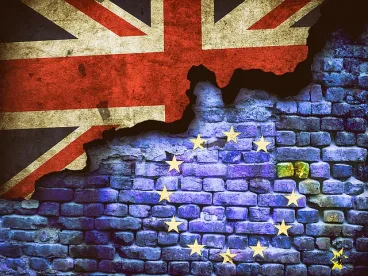It is one of the ironies of history that the EU as it is today, starting with the single market, was largely made in Britain, the achievement, above all, of former prime minister Margaret Thatcher and her right-hand man in Brussels, the then Commissioner (Lord) Arthur Cockfield. The single market has long been viewed by observers in countries with less of a free market tradition as a typically British liberal invention. And yet it is this market, as well as the EU itself, that another Conservative government is now seeking to leave.
Britain has also left its stamp on key EU initiatives from regional policy to development assistance and fisheries. The EU’s interest in a common foreign and security policy originally stemmed from Britain. The EU’s comparatively transparent and accountable administrative rules date from the reforms introduced by former British Labour Party leader Neil Kinnock when he was Vice-President of the European Commission from 1999 to 2004. Thus, representatives of Britain’s two major parties have helped to make the EU what it is today.
If British prime ministers had explained to public opinion earlier the extent of their country’s influence on the EU, something that other Europeans never doubted, the referendum of 23 June 2016 might never have occurred.
A “Smooth and Sensible” Brexit
Be that as it may, Europeans on both sides of the English Channel are now grappling with the consequences of that vote. If reason and economic interest prevail, a “smooth and sensible” Brexit, as evoked by the British prime minister in Florence in September, might yet emerge.
This would involve a broad agreement, in 2017, on the principal aspects of the divorce settlement. This concerns mainly Britain’s financial commitments to the EU, the residence, professional and health rights of citizens living on both sides of the Channel after Brexit, and the need to maintain the Common Travel Area between Britain and Ireland and to avoid a hard border across the island of Ireland after Brexit. While Brussels, London and Dublin have affirmed their intention of achieving these goals, there are many practical and political issues to resolve.
If sufficient confidence and trust between EU and UK negotiators is established, it should also be possible to agree to the general terms of a future political and economic agreement between London and Brussels by the end of the year and to broach the question of transitional arrangements to smooth the way for government and business. The British government wishes to ensure that business need adjust to Brexit only once, hence the need for a smooth transition to a well-defined future relationship.
If good progress is made next year, the separation agreement and transitional arrangements could be drawn up by October 2018, allowing enough time for approval by EU and British institutions ahead of Britain’s exit from the EU at midnight between 29 and 30 October 2019. Little, except Britain’s lost vote in EU institutions, would then change for the next two to three years, as the UK continued to make payments to the EU budget, respect judgements of the European Court of Justice and accept the free movement of labour.
The breathing space would be used to negotiate, sign and ratify a two-part long-term agreement. The first part would cover trade and economic issues; it could take effect provisionally relatively quickly after agreement had been reached. The second part, though, would be a wide-ranging political agreement, involving security and even aspects of defence. Both sides have an interest in cooperation on armaments production and unconventional forms of conflict, as well as police and judicial affairs. This would involve the member states’ legal responsibilities and require ratification by all twenty-eight countries concerned. It might not come into effect before the mid-late 2020s.
This relatively benign sequence of events assumes that the British government is unified behind its negotiator, David Davies, and that the political situation in Britain and the EU remains generally stable. It also assumes that the EU can move beyond its rigid two-stage sequencing of the negotiations.
However, there may well be political upsets, involving a leadership competition in the Conservative Party and, perhaps, an early general election. The opposition Labour Party may come to power bringing a change in priorities but also differences of opinion in its own ranks. The British economy will be damaged by Brexit, according to leading economists, and public opinion is likely to react when this is widely felt.[1]Until now, the main impact has been a decline in sterling and rising inflation, raising the prospect of higher interest rates.
The “Cliff Edge” Scenario
Such uncertainties, as well as the divergent political agendas of London and Brussels, may make the smooth and sensible Brexit impossible to achieve during the limited time available. This opens the way to a second scenario, widely described in Britain as the cliff edge. Under this hypothesis, the December 2017 goal for achieving a breakthrough in the separation talks is missed. This further postpones discussion of transitional arrangements and a future long-term agreement.
Negotiations continue fitfully during 2018 but the two sides are too far apart to reach agreement by October 2018, which the EU chief negotiator, Michel Barnier, has designated as the effective deadline. If October passes without an overall agreement, it will probably be too late to secure the agreement of the European Parliament before 29 March 2019, when the two-year negotiating period initiated by the British government’s notification of withdrawal expires. Nonetheless, negotiations might well go down to the wire.
Unless all twenty-eight countries “stop the clock” at midnight, an old Brussels ruse, the UK would then leave the EU without an agreement. Business leaders have warned of the chaos this will bring. There will be an unmanageable fivefold increase in work at British, Irish and mainland European ports checking consignments, the suspension of air travel between the UK and the EU, pending the conclusion of a new air transport agreement, and other major disruptions.
Health, safety, veterinary and phytosanitary inspections, as well as the assessment of customs duties, would lead to long queues of lorries at ports on both sides of the channel. Neither side can build the necessary infrastructure and linked IT systems or recruit sufficient qualified staff in time to cope with dramatically increased requirements after a hard Brexit. Supply chains would be disrupted and many foreign-owned companies, which had not already relocated to remaining EU countries, would seek to do so rapidly.
The political and economic damage of going over the cliff edge would last for years and embitter the UK’s relations with the EU and third countries. Many would question the value of Britain’s WTO commitments in the absence of appropriate trading arrangements between Britain and the EU.
This then is a sketch of the cliff edge. Those who admire Britain for its pragmatism, fairness and common sense find it hard to believe that such a scenario might become reality. Surely, they say, Britain and the EU are involved in preliminary skirmishing of the type that precedes any negotiation. They are sure to come to their senses as the decisive deadlines approach. Nothing is less than certain.
A Tale of “Downside” Risks
The outcome may well diverge from either the optimistic or the pessimistic scenarios delineated above. However, the risks are mainly “downside” as the economists put it. British negotiators have not yet grasped the fundamentally asymmetric nature of negotiations between twenty-seven countries backed by European institutions on the one side and a single country seeking to leave the club on the other. It would be better for government, business and the public, if this reality were more widely recognized, leading to realistic negotiating targets. Indeed, Brexit is not really a negotiation at all in the usual sense. It is rather an effort by the leaving country to secure some exceptions from the club’s rules at the time of its departure. This is much akin to the efforts of a candidate (joining) country to achieve some, temporary, transitional exceptions to the EU’s rules.
The Brexit talks are essentially an exercise in damage limitation, mainly through transitional arrangements. When the divorce and transitional arrangements have been agreed, Britain and the EU can concentrate on negotiating a long-term partnership which will be in their mutual interest.




 />i
/>i
